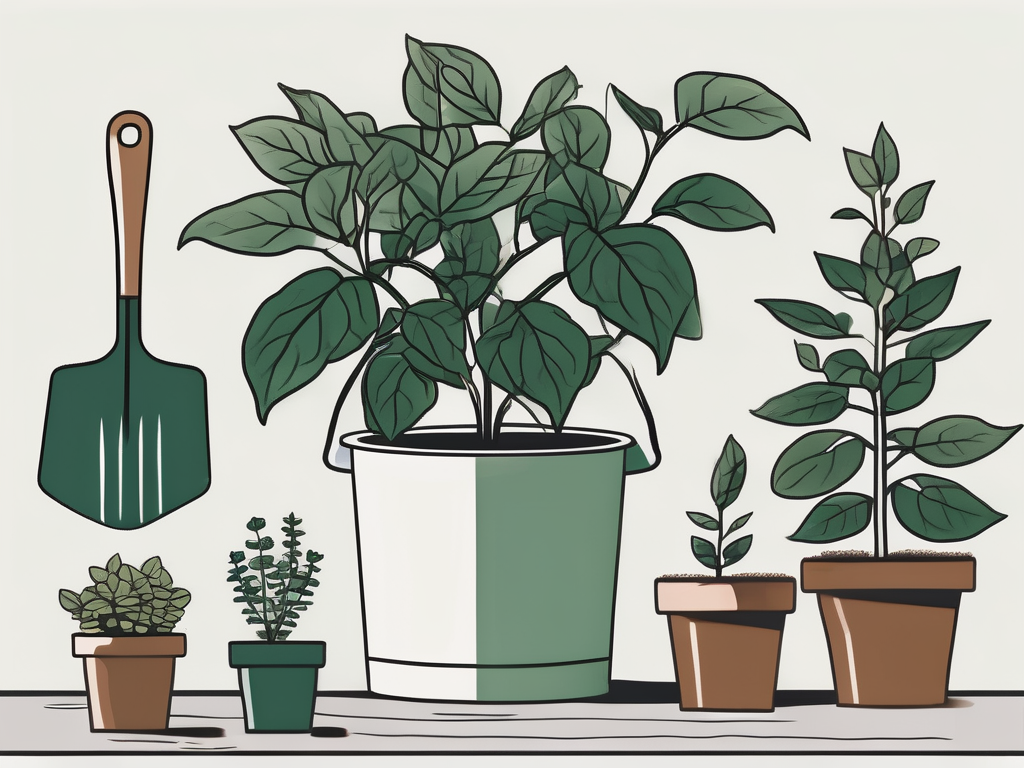
Calla lilies are stunning plants with their elegant blooms and glossy leaves, making them a popular choice among plant lovers. If you're looking to expand your collection or share these beauties with friends, propagating your calla lilies is a rewarding venture. It might seem a bit intimidating at first, but once you get the hang of it, you'll find it to be a delightful journey into plant parenthood.
This guide will take you through the steps of propagating calla lilies, ensuring that you understand the process and have fun along the way. From selecting the best time to propagate to understanding the care needed for young plants, we’ll cover everything you need to know to feel confident and excited about growing new calla lilies.
Understanding the Basics of Calla Lily Propagation
Before diving into the nitty-gritty, let's chat about what propagation means. Essentially, it's the process of creating new plants from existing ones, and with calla lilies, this is typically done through division. Calla lilies grow from rhizomes—thick, underground stems that store nutrients and shoot out roots and leaves. By dividing these rhizomes, you can produce new plants.
Why divide instead of starting from seeds? While you can grow calla lilies from seeds, it's a much slower process and doesn't guarantee that the new plants will resemble the parent. Division, on the other hand, is straightforward and ensures that the new plants are clones of the original.
Here's a quick look at the propagation timeline:
- Spring or Fall: These are the best seasons to divide calla lilies, as the plants are either coming out of dormancy or about to enter it.
- Two to Three Weeks: This is the average time it takes for new divisions to establish themselves once planted.
- Blooming Season: Expect blooms on your new plants during the next growing season after propagation.
When to Propagate Your Calla Lilies
Timing is everything when it comes to plant propagation. For calla lilies, the best times to divide and propagate are in early spring and late fall. Here's why:
Spring Propagation: As temperatures rise and days lengthen, calla lilies start waking up. This is a great time to propagate because the plant is gearing up for growth. By dividing in spring, you give your new plants a full growing season to establish themselves.
Fall Propagation: After the growing season, as the lilies start to go dormant, you have another opportunity to divide. This allows the rhizomes to settle during the cooler months, ready to burst into life come spring.
Keep an eye on your lilies; if they're thriving and have outgrown their pot or space, it's a sign they're ready for division. On the flip side, if they seem a bit crowded or aren't blooming as robustly, it might be time to give them some room to breathe.
Preparing Your Tools and Workspace
Before you start dividing your calla lilies, you'll want to gather a few tools and set up a workspace. This makes the process smoother and more enjoyable. Here's what you'll need:
- Garden Spade or Fork: For digging up the calla lilies. A fork can be gentler on the rhizomes if your soil is compacted.
- Sharp Knife or Pruning Shears: To divide the rhizomes cleanly. Ensure they are clean and sharp to minimize damage and prevent disease.
- Gloves: Calla lilies can irritate the skin, so gloves are a good idea.
- New Pots or Garden Beds: For planting your newly divided rhizomes. Ensure they have good drainage.
- Potting Soil: A mix that retains moisture but drains well, usually a blend of peat, compost, and sand or perlite.
Once you have your tools, choose a workspace that is comfortable, well-lit, and easy to clean. A garden shed or a patio works well, but a kitchen counter can do in a pinch!
Digging Up Your Calla Lilies
Now that you're all set up, it's time to gently lift your calla lilies from the ground or their pots. This step requires a bit of care to avoid damaging the rhizomes. Here's how to do it:
- Water the Plant: Water your calla lilies a day before you plan to dig them up. This softens the soil and makes it easier to lift the plant without causing damage.
- Dig Around the Plant: Use your spade or fork to loosen the soil around the base of the plant. Start a few inches away from the stems to avoid cutting into the rhizomes.
- Lift the Plant: Gently lift the plant, using your hands to support the base and catch any loose rhizomes. Shake off excess soil to better see the rhizomes.
- Inspect the Rhizomes: Look for healthy, plump rhizomes. These are ideal for propagation. Discard any that are mushy or rotten.
Take your time with this step. Although calla lilies are robust, they appreciate a gentle touch during the upheaval. Plus, it's a great opportunity to inspect your plants for any signs of pests or disease.
Dividing the Rhizomes
With your calla lilies safely out of the soil, you're ready to divide the rhizomes. This is where the magic happens, and it's not as tricky as it sounds. Here’s how to do it:
- Identify Natural Divisions: Look for natural divisions in the rhizome. These are often indicated by small shoots or buds. Each division should have at least one bud.
- Make Clean Cuts: Using your sharp knife or pruning shears, cut the rhizome into sections. Ensure each piece has at least one bud or shoot, as this is where the new growth will emerge.
- Let Them Dry: Before replanting, let the cut rhizomes dry for a day. This helps prevent rot by allowing the cut surfaces to callous over.
Remember, the goal is to create viable new plants, so don't rush. Take your time to ensure each section is healthy and ready to grow.
Planting Your New Calla Lilies
You've done the hard work of dividing your calla lilies, and now it's time to plant them. Whether you're rehoming them in pots or directly into the ground, the process is straightforward:
- Prepare the Soil: For pots, use a well-draining potting mix. In the garden, amend the soil with compost to improve drainage and nutrient content.
- Plant the Rhizomes: Place the rhizomes about 2-3 inches deep, with the bud facing upwards. Space them about 6 inches apart in the garden to allow for growth.
- Water Thoroughly: Give the newly planted rhizomes a good soak. Consistent moisture will help them establish roots.
- Maintain Optimal Conditions: Calla lilies prefer partial shade and evenly moist soil, so keep an eye on their environment as they settle in.
Patience is key here. It might take a few weeks for shoots to appear, but rest assured, those little rhizomes are busy setting roots and getting ready to grow.
Caring for Newly Propagated Calla Lilies
After planting, your new calla lilies need a bit of TLC to get established. Here are some care tips to help them thrive:
- Watering: Keep the soil consistently moist but not waterlogged. Overwatering can lead to rot, while underwatering can stress the plant.
- Light: Provide bright, indirect light. Too much direct sun can scorch the leaves, while too little can hinder growth.
- Feeding: Use a balanced, water-soluble fertilizer every 4-6 weeks during the growing season to encourage strong growth.
- Monitoring: Regularly check for signs of pests like aphids or spider mites, and address any issues promptly.
With proper care, your calla lilies will soon be flourishing, ready to reward you with their stunning blooms and lush foliage.
Troubleshooting Common Issues
Even with the best care, sometimes things don't go as planned. Here's a quick troubleshooting guide for common issues:
- Yellowing Leaves: This can indicate overwatering or poor drainage. Check your watering habits and ensure pots have adequate drainage.
- No Blooms: If your lilies aren't blooming, they might not be getting enough light or nutrients. Adjust the light conditions and consider a fertilizer boost.
- Rotting Rhizomes: Often due to overly wet conditions. Ensure soil drains well and avoid watering too frequently.
- Pest Infestations: Regularly inspect your plants and treat any infestations with insecticidal soap or neem oil.
Remember, every plant is different, and sometimes it takes a bit of trial and error to find the perfect balance. Don’t be discouraged—learning from these hiccups is all part of the plant parenting journey.
Enjoying Your New Plants
With your calla lilies thriving, it's time to enjoy them! Whether displayed indoors or out in the garden, these plants bring elegance and charm to any space. Here are a few ways to make the most of your new beauties:
- Indoor Display: Use decorative pots that complement your home decor. Calla lilies make stunning centerpieces or accents in living rooms and kitchens.
- Outdoor Arrangement: Combine your calla lilies with companion plants like hostas or ferns for a lush, layered look in shaded garden beds.
- Gift Giving: Share the joy by gifting potted calla lilies to friends and family. They're a thoughtful, personal touch for birthdays or housewarming gifts.
The satisfaction of watching your propagated plants thrive is truly rewarding. Not only have you expanded your collection, but you've also gained valuable skills in plant care and propagation.
Final Thoughts
Propagating calla lilies is a fulfilling way to expand your plant collection and share the joy of gardening with others. By understanding the process, preparing your tools and workspace, and caring for your newly divided plants, you'll enjoy healthy, thriving calla lilies for years to come.
If you're looking to explore more plant options or need advice on plant care, feel free to visit Cafe Planta. We offer a wide variety of houseplants, as well as care accessories and plant-themed apparel. If you have any questions, don't hesitate to email us or connect with us on Instagram. We're excited to help you on your plant journey and share our love of plants with you!












